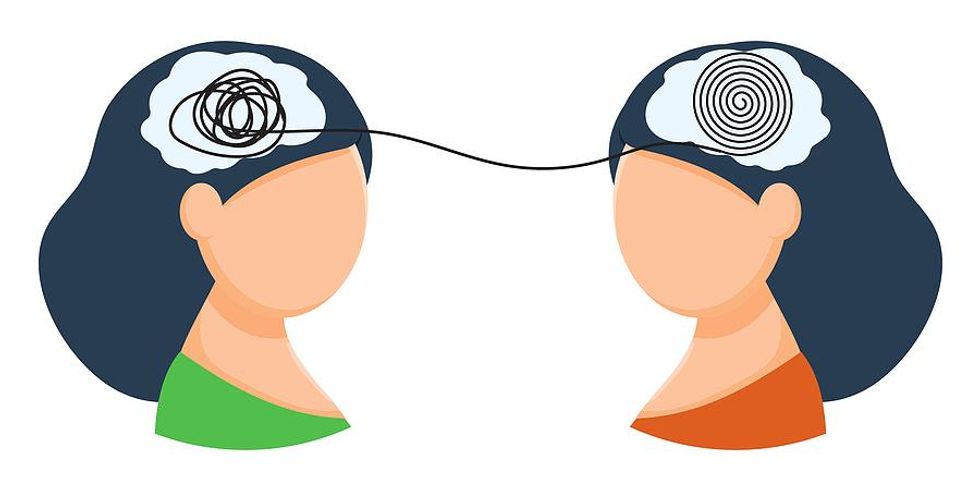
How do you know if you understand something?
I am a non-technical person working in an IT company. My colleagues will often tell me something technical. Sometimes I understand what they are saying. Sometimes I have no idea what they are talking about. Sometimes I think I understand what they are telling me when they are telling me, but then later I realize that I don’t understand it at all.
Understanding is complex. As communicators and trainers, we need to think about how understanding works to communicate and train effectively.
We are all communicators and trainers at one time or another.
What Is Understanding?

Bigstock
A quick Google search of “understanding” does not provide a clear answer.
Researchgate, quoting “Newton, 2000,” says, “Understanding implies being able to think, act and apply the knowledge in different ways in various situations.”
Robert Ryshke, writing in “gse.harvard.edu,” states, “Understanding a topic of study is a matter of being able to perform in a variety of thought-demanding ways with the topic.”
Artseducator.org says something very similar: “Understanding is a matter of being able to do a variety of thought-provoking things with a topic.”
Let’s Ask Again: How Do You Know If You Understand Something?

Bigstock
If someone explains something to you and then asks you if you understand it, you will probably reply based on how you feel.
As a trainer, you may well look at your trainees’ faces to see if they understand the material. When they don’t understand, they may look uncertain or give you the “What are you talking about?” look. (My two-year-old niece is very good at that!)
The feeling that you understand is sometimes deceptive. This is why educators use “output activities” or tests to see if trainees really understand.
How Can We Test Understanding?

Bigstock
The worst thing you can do is ask: “Do you understand?” It puts the burden of understanding on the trainee. If he doesn’t understand, it’s the trainer’s fault. She needs to explain the content in a different way.
When learning in groups, trainees may not say they do not understand for fear of looking stupid in front of their colleagues.
There are a number of options you can build into your training plan. These options are based on Wiggins and McTighe’s “6 Facets of Understanding”:
- Ability to explain the content: This has to be more than just repeating the material verbatim. Let’s imagine you are teaching sales agents a new sales script. If your trainees create a mind map to explain the material they received in a PowerPoint presentation, they are reformatting the information and engaging with it at a deeper level than they would by repeating it.
- Interpreting the content: To see how well your agents might understand the sales script, ask them to explain it to their colleagues as if the other person was five years old, their grandmother, or to an alien from another planet. Their challenge is to explain it to someone who does not have the same contextual knowledge that they do.
- Applying the content: When teaching your sales team the new script, this will include getting them to role play it. One trainee will be the salesperson and the other the customer. Role plays can include “what would you do if…?” scenarios to practice dealing with different types of customers and handling different objections.
- Having a perspective based on the content: You can build this into the role plays by asking the “customer” to play a specific kind of customer and behave as this kind of person might behave. In a business-to-consumer scenario, this might involve playing roles representing different demographics. In a business-to-business context, this might mean playing the roles of customers in different verticals who have different requirements and different ways of behaving. Builders have different needs and behave in different ways from bankers.
- Empathize: When adopting roles in the role-play training, ask trainees to imagine how customers might feel and put those emotions into the training. This could include angry and aggressive customers. This gives trainees playing the salesperson’s role the chance to test their skills in handling an angry customer, while it gives the trainee playing the “angry customer” the chance to imagine how the angry customer is feeling, and adjust how she handles him accordingly.
- Have self-knowledge: Some trainees may find this uncomfortable since trainees need to examine their own reactions and feelings towards the content. For salespeople, particularly after they have role-played a demanding conversation, this may help them to understand and manage their own emotional responses when facing, for example, angry customers.
The Ball’s In Your Court!

Bigstock
Are you planning some training? How do you know that you understand the content well enough to train it? What questions are you afraid people will ask? How do you plan to test your trainees’ understanding?
I’d love to hear more about it! Drop me a line!
Further reading...
The following article may be both relevant and useful: Explaining How Things Work: How To Do It And Why It Matters
- 5 Professional Development Tips For College Students - Work It Daily ›
- 4 Critical Adult Learning Mistakes Your Organization Can't Afford To ... ›
- 5 Ways To Develop Your Skills On The Job - Work It Daily ›

 Bigstock
Bigstock Bigstock
Bigstock Bigstock
Bigstock


